A deciduous tree is a tree that loses its leaves in the winter. They are giant flowering plants that include oaks, maples, and beeches, and they grow in many parts of the world. Deciduous trees provide many benefits; one of them includes providing shades in the summer and allowing the sun to shine through in the winter.
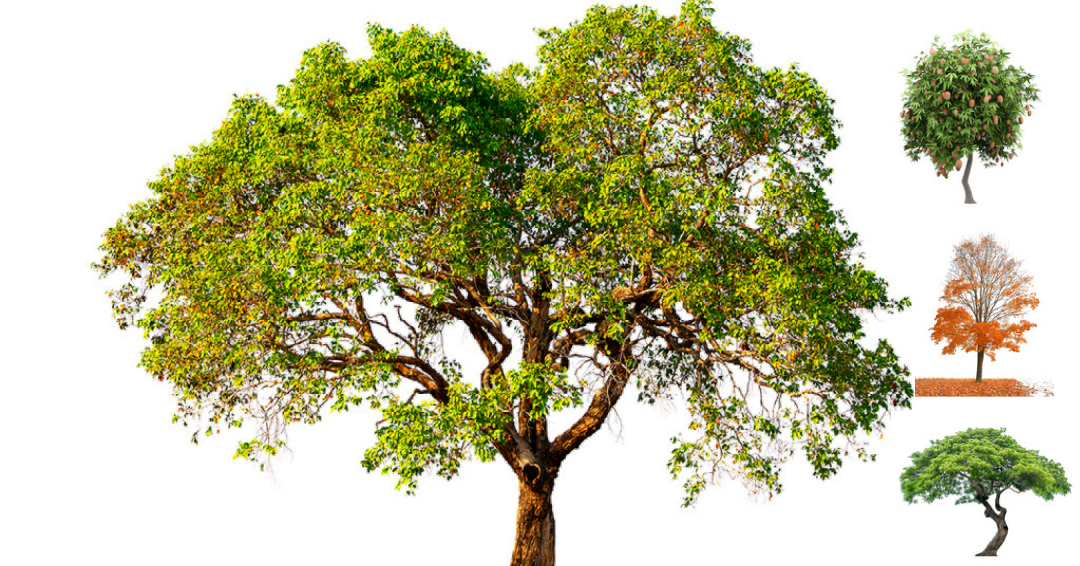
Most Deciduous trees are broad-leaved and often have a rounded shape with branches that spread out as they grow. Deciduous trees thrive in areas with a mild, wet climate, and they also grow in places with wet and dry seasons. They can also be called broadleaf trees or hardwood trees.
Characteristics of Deciduous Trees
Here are some common characteristics of deciduous trees:
- Leaf shedding: Deciduous trees lose their leaves annually, usually in the fall and grow new leaves in the spring. This adaptation allows them to conserve energy during the winter months when water and light are scarce.
- Broad leaves: Deciduous trees typically have broad leaves which are well adapted to capture sunlight and photosynthesize efficiently during the growing season.
- Seasonal adaptation: Deciduous trees are able to adapt to different seasons, they have a well-defined annual growth ring, leaves are shed in the fall, and the tree goes dormant in the winter.
- Showy flowers or colorful fruit: Many deciduous trees have showy flowers and/or colorful fruit, which are typically produced in the spring or summer.
- Dormancy: Deciduous trees have a dormant period during the winter, which allows them to conserve energy and survive the cold temperatures.
- Bark: Deciduous tree bark is often thick and deeply furrowed, and can have different colors, such as grey, brown, or green.
- Wood: Deciduous tree wood is typically hardwood, and is used for various purposes such as furniture, construction, and paper production.
- Root system: Deciduous tree root systems are typically deep and extensive, allowing them to absorb water and nutrients from the soil and anchor the tree in place.
10 Types Of Deciduous Trees
Deciduous trees are trees that shed their leaves and can be found in most regions of the planet. Some of the most well-known deciduous trees include;
1 . Oak

Oak is one of the deciduous species that are marcescent and does not drop dead leaves until spring. They are found in many habitats, from dry scrubs to swamps. Their distinctive lobed leaves generally identify them.
Common oak species include Black Oak, English Oak, White Oak, Red Oak, and Bur Oak. The Asian Oak species includes Mongolian, Oriental, Japanese, Daimyo, and Saw Tooth. Oakwood is often used as lumber in the construction, furniture, and flooring industries.
2. Maple

The Maple genus Acer is placed in the family of Sapindaceae and is approximately 132 species found in most world regions, including Europe, Northern Africa, and North America. Maple trees grace landscapes throughout the world and are primarily deciduous, meaning they lose their leaves each fall.
Maples are easily recognizable by their leaves which may be slender and almost lacy. They also have green leaves during the growing season, while some may have red or Ruby bronze-colored leaves. They are often used as ornamental trees in landscaping and are often used to produce items like bowling pins, butcher blocks, baseball bats, and maple syrup.
3. Birch
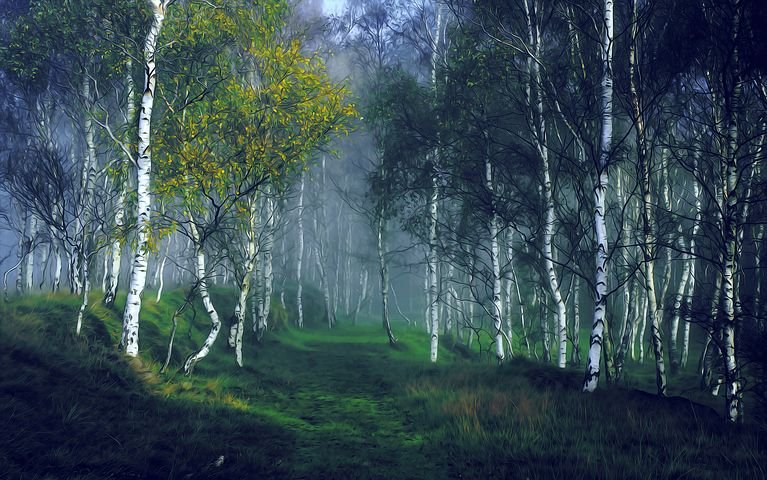
Birch (Genus Betula) is a slender Hardy tree with thin peeling bark and bears catkins. It is classified as part of the Betulaceae family of plants and is typically small to medium-sized trees and shrubs found in temperate zones in the Northern Hemisphere.
There are approximately 40 species in the Birch Betula genus, some of which includes paper, gray, white, and yellow. Birch is often used to produce furniture, flooring, paneling, trim, cabinets, and plywood.
4. Ash

Ash, otherwise known as Fraxinus, is a genus of flowering plants that belongs to the Olive and lilac family. It has approximately 45-65 species of trees or shrubs primarily distributed throughout the northern hemisphere. The seeds are used to make medicine that people take for diabetes, arthritis, constipation, bladder problems, gout, and fluid retention.
5. Willow

Willow (Salix), also called Salloe and Osiers, belongs to the family of Salicaceae and the subfamily of Salicaceae. They are approximately 400 species found primarily in moist soil in cold and temperate regions of the northern hemisphere. The species have alternate narrow leaves and catkins valued for ornament, shade, erosion control, and timber.
6. Aspen
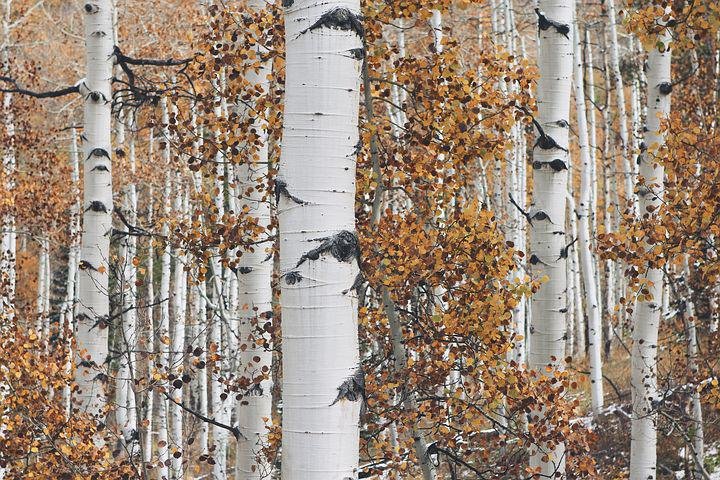
Aspen (Populus Tremuloides) is a deciduous tree native to more excellent areas of North America. They are medium-sized deciduous trees, commonly 20 to 80 feet in height and 3 to 18 inches in diameter.
The Aspen tree is the most widely distributed tree species in North America. It ranges from Alaska to Newfoundland, down the Rocky Mountains to Mexico.
7. White Poplar
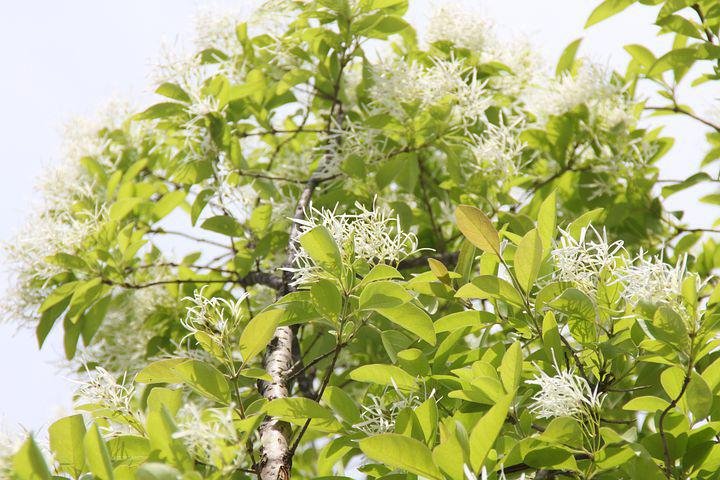
White Poplar, commonly called Populus Alba, is a deciduous tree that grows 20-30m high. Its other name includes silver poplar and Abele, and it belongs to the willow family (Salicaceae).
The white poplar leaves are dark-green gray and whitish on the underside. Most leaves have five lobes and irregular teeth around the edge.
Its flowers are catkins, with male catkins being red and female catkins being yellow. Female catkins develop into fluffy, cotton-like seeds when fertilized, which fall in summer.
8. Beech

Beech (Fagus) is a genus of deciduous trees that belongs to the family of Fagaceae and is native to Europe, Asia, and North America. It is also a beautiful specific tree commonly referred to as the queen of British trees. Beech trees are often characterized by smooth gray bark, long, slender, and three-angled buds (beechnuts).
9. Ironwood
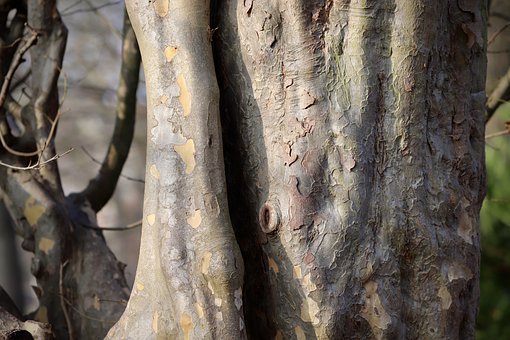
Ironwood is described as a thorny understory tree with beautiful bitch like leaves that are grayish-brown, flaky bark, and fine-textured dropping branches. The tree only grows in the Southwest’s Sonoran desert and is one of the biggest and oldest plants that grow up to 45 feet.
10. Sycamore
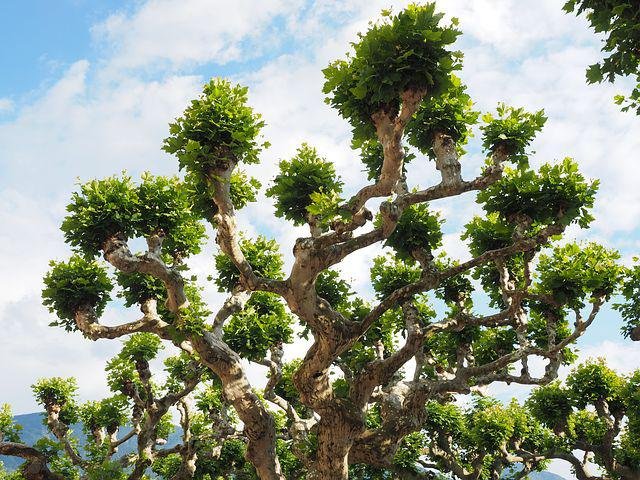
Sycamore (Platanus Occidentalis) is commonly known as American Planetree, American Sycamore, Occidental plane, buttonwood, and water beech. The sycamore tree belongs to the family of Platanaceae. It is native to the North Eastern and the Central United States, the mountains of Northeastern Mexico, extreme Southern Ontario, and Extreme Southern Quebec. One interesting fact about the sycamore tree is that it makes handsome shade trees for large Landscapes.
Why Deciduous Trees Lose Their Leaves
Deciduous trees tend to lose their leaves in autumn, unlike the evergreen leaves, which keep them all year round. The life cycle of deciduous plants revolves around a growing season and a dormant season. Warm temperatures and rainfall make the plants form new leaf buds, and as the temperature continues to get warm, the leaves develop fully and reach maturity in summer.
Despite having to deal with the fallen leaves for part of the year, many people find this tree attractive and often use it for providing woods for things like fires, buildings, and sculpting.
What Causes Deciduous Trees To Lose Their Leaves
Deciduous trees losing their leaves depends on the plant’s genetics and reaction to their environments. Leaf loss occurs in a reasonably predictable pattern. Deciduous trees lose their leaves when they go dormant, which serves as self-preservation.
The plants require sun, light, and water to survive, and when one of these elements is lacking, it triggers hormonal changes, and this causes the tree to put more energy into surviving, so it ends up losing its leaves.
Other reasons that cause deciduous trees to lose their leaves include,
1 . The tree spends less energy through the harsh winter.
2. The tree conserves moisture within its trunk and keeps it from drying out.
3. The tree allows wind to blow through the branches, which puts less strain on the tree, a severe concern of winter storms and gales.
Deciduous Trees Vs. Evergreen Trees
The deciduous tree is a tree that sheds its leaves in the winter. However, Evergreen, as the name implies, doesn’t shed its leaves. It has leaves throughout the year. Evergreen trees are mostly Coniferous trees, including Blue Spruce, Western Redcedar Mountain Hemlock, etc.
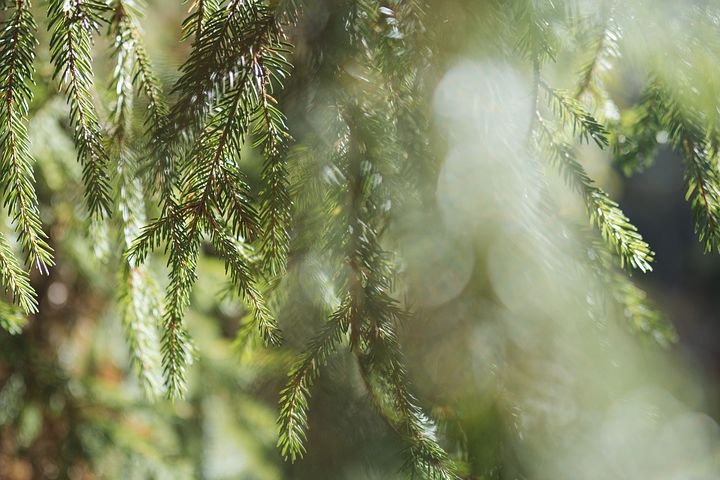
1 . Losing Leaves
The critical difference between deciduous trees and evergreen trees is losing leaves. Deciduous trees lose their leaves in the winter, while Evergreen trees don’t lose their leaves. It has leaves throughout the year that are always green.
2. Energy Requirements
Another significant difference is energy requirements. Evergreen trees require higher amounts of nutrients for survival during bad weather conditions.
Evergreen trees do not shed their leaves at that time, so the plants require more nutrients to help ensure that their body parts are not damaged and stay in good condition. In addition, deciduous trees have low energy needs during harsh climatic conditions but have a nutrient requirement immediately after harsh weather, especially during the renewal of foliage.
3. Survival
Evergreen trees can ensure survival since they make the soil more saline and lower the nitrogen contents, unlike the deciduous trees.
4. Leaf Appearance
Deciduous trees have broader leaves, unlike evergreen leaves. The broader leaves ensure that the plant produces as much food during summer and fall to survive winter and autumn. However, evergreen trees have smaller leaves, and they never lose the green color of their leaves.
5. Habitat And Distribution
Evergreen trees mostly grow in tropical rainforests, while deciduous trees grow in temperate forests or tropical and subtropical forests.
Deciduous Trees Vs. Coniferous Trees
Deciduous trees change colors and shed their leaves in winter. In the fall, the trees drop their leaves to save energy when it gets cold. Deciduous trees produce flowers to aid in production during spring and winter.
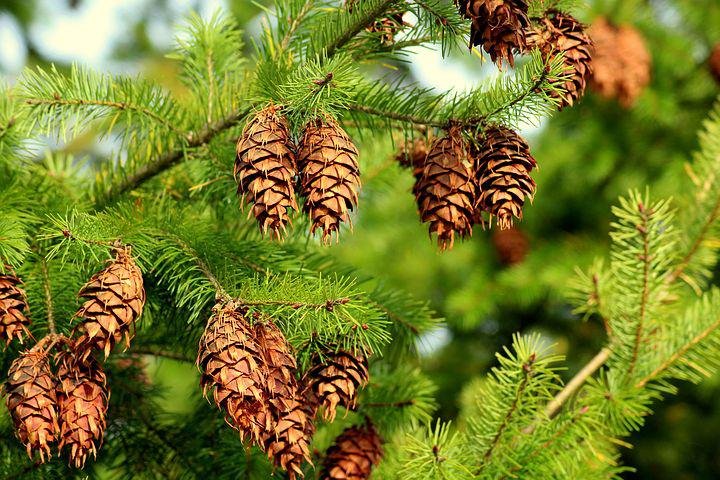
When these flowers are fertilized by pollen, they are carried by pollinating insects which create seeds. Coniferous trees stay green all year long. They have needles instead of leaves, and they love the cold and can grow pinecones that protect the seeds until they mature.
Coniferous trees are tall and shaped like a triangle. The triangle shape helps them survive in the cold and keep the snow from getting in their trunk. Coniferous trees reproduce without flowers and pollinators and rely on the wind to carry their pollen to receptive female cones. Coniferous trees include Cedar, Fir, Larch, Yew, Douglas Fir, etc.
Frequently Asked Questions
1 . Are Elm Trees Deciduous?
Elm trees belong to the family of Ulmaceae and are part of the deciduous species distributed across North America, Europe, and Asia.
2. Are Mangoes Deciduous?
Mangoes can be deciduous because they lose their leaves due to the weather, soil quality, changing seasons, etc.
3. How Do You Know If A Tree Is Deciduous?
Knowing if a tree is deciduous is relatively easy. Trees that shed their leaves in winter are called Deciduous.
4. What Are Non-Deciduous Trees Called?
Non-Deciduous Trees are called evergreens. While Deciduous trees shed their leaves in winter, Evergreen trees do not. They have leaves throughout the year and are always green.
